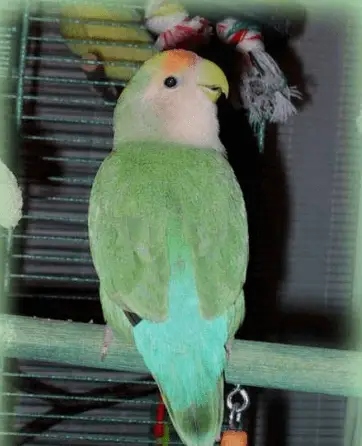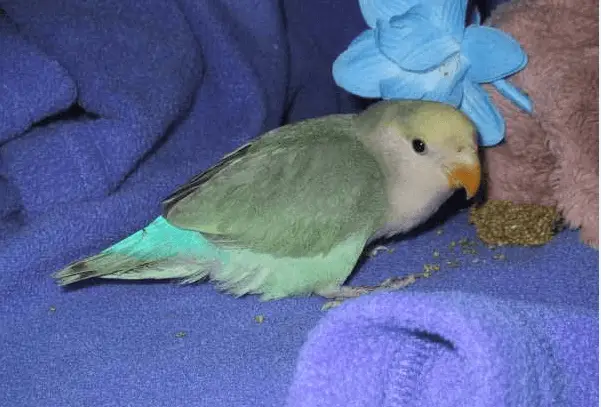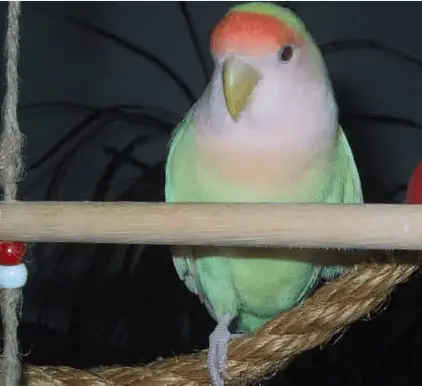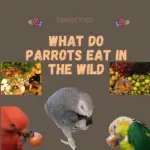
Cohabitation between parrots of the same species? What is the best deal? Multiple males? Several females? Per pair? We guide you on the choice of a second parrot of the same species.
Can two parrots live in the same cage: Most of the time, in nature, it is large groups of parrots that move and live together. It is not uncommon, despite everything, to see couples formed and welded all their lives.
In general, couples work best…
One takes a total interest in the other parrot, they pamper each other… This is surely the most pleasant scenario to watch, and the most natural! Be careful when breeding, male + female = babies. Remove anything from the cage that encourages them to breed if you don’t want little ones (like nesting boxes).
2 females, why not!
Females are often known to be quite territorial. You have to be able to identify them to see if the cohabitation would work. It is always easier to keep 2 females when they are sisters, they have always known each other!
2 males, that’s okay too!
2 males together, it can pass! If they were raised together there is even more chance that everything will go well! They are certainly less territorial than females, but quite annoying during hormonal periods.
We do not forget the living conditions…
Wanting 2 or more parrots is perfect, but you must also plan that behind:
- The cage should be adapted, there are double cages
- The second parrot will eat more, soil the cage too
- Vet costs are to be expected (twice as many chances of illness, death, etc.)
Can Two Different Parrots Be In The Same Cage? ? PARRONT TIP TUESDAY
SOURCE:MARLENE MC’COHEN
Also keep in mind that this guide presents the most common scenarios, each individual is different and may react differently from others.
Can two parrots live in the same cage: You can easily imagine the power of a macaw’s beak. Also, when Cookie, the lovebird, went to say hello to her alleged new friend, Oscar the macaw, what had to happen happened.
The wire mesh of Oscar’s cage allowed Cookie to stick his head inside to better inspect this new installation recently arrived in the living room. Oscar, unsociable and offended by such familiarity, immediately made Cookie understand that he is the only master in his cage by inflicting a warning bite on his head.
The problem is, such a warning from a large parrot, such as a macaw, on a lovebird can turn into a bite that is nearly fatal.
Cookie arrived urgently at the clinic just 10 minutes after the accident. He was semi-comatose and was bleeding from his beak, ears, nose and a laceration on the top of his head.
The main point of impact was right there: the skin was torn off about 1.5 cm, exposing the bone of the skull. Fortunately, the skull was intact, which was not the case with the bones of the face. Indeed, these had sunk on impact, staring at poor curious Cookie.
Emergency intensive care was immediately applied. This involved stabilizing the bird, replacing lost fluids, giving vitamin B and iron as well as antibiotics, anti-inflammatories and painkillers.
A special bandage was placed on the open wound of the skull. It turned out to be impossible to sew stitches because there was not enough skin left.
The bandage, made of a gelatinous material, prevents drying out of bone and vital structures under the bone, allows the wound to breathe without drying out and artificially recreates the protection of the skin.
The bird being unable to feed itself, it was necessary to force-feed it and it only remained to settle down comfortably in peace and let nature do the rest. Obviously, the owners of Cookie were well aware of the risks of complications that could arise and even of the possible death of the injured child.

The lovebirds’ will to live and legendary strength of character certainly contributed, along with medical care, to Cookie’s near-miraculous recovery.
The convalescence was long. The wound on the head is closed by a phenomenon called “granulation”, which means that scar tissue has formed all around the wound and has moved towards the center. to finally completely close the wound. Although Cookie remained almost bald, the feathers on his head gradually returned.
As the bones in his face had been sunk, Cookie had to be force-fed until the force returned to his beak and he could eat on his own.
Today, Cookie retains little of the after-effects of her accident. Other than his partial baldness and funny little face, no one can imagine where he went.
The owners moved Oscar’s cage away from Cookie’s. Prevention always tastes better.
Accidents involving bites in parrots are always very serious. Especially when it comes to cat or dog bites. Indeed, two main phenomena can occur.
1. The pressure exerted by the aggressor’s jaw on the victim’s body can cause internal bleeding by bursting organs or suffocation if the pressure is maintained.
2. Any injury or tear to the skin or muscle through the teeth allows the passage of a large quantity of pathogenic bacteria; these are present especially in the saliva of dogs and cats. We can say that a bite inflicted by a bird is less dangerous.

So, following an assault, even if the bird’s injuries seem minor, you should know that the situation is critical. If the victim does not receive antibiotics, the bacteria deposited in the wounds, however small, multiply and spread throughout the body of the bird through the bloodstream.
This phenomenon is called “septicemia” and the bird which develops one dies suddenly within 2 to 4 days of the accident without any obvious sign of discomfort. In addition, a critical period of approximately 48 hours is observed in any attacked bird due to the risk of internal and / or cerebrovascular bleeding.
It is impossible to assess the integrity of blood vessels and internal organs following an assault. The intense pressure undergone during the bite has the effect of weakening these structures to different degrees.
In short, you have to be careful and learn to recognize risky situations. However, you must remain calm if an accident does occur anyway. Thus, you must not shoot a bird caught in the mouth of a cat or a dog to free it.
Try to open the jaws of the abuser and gently remove the victim. The bleeding will be controlled immediately by applying pressure to the injured area. It is recommended to wrap the bird in a towel to calm it down and keep it warm. It is then necessary to consult the veterinarian quickly, even if everything seems correct. It may be the life of your parrot.




















